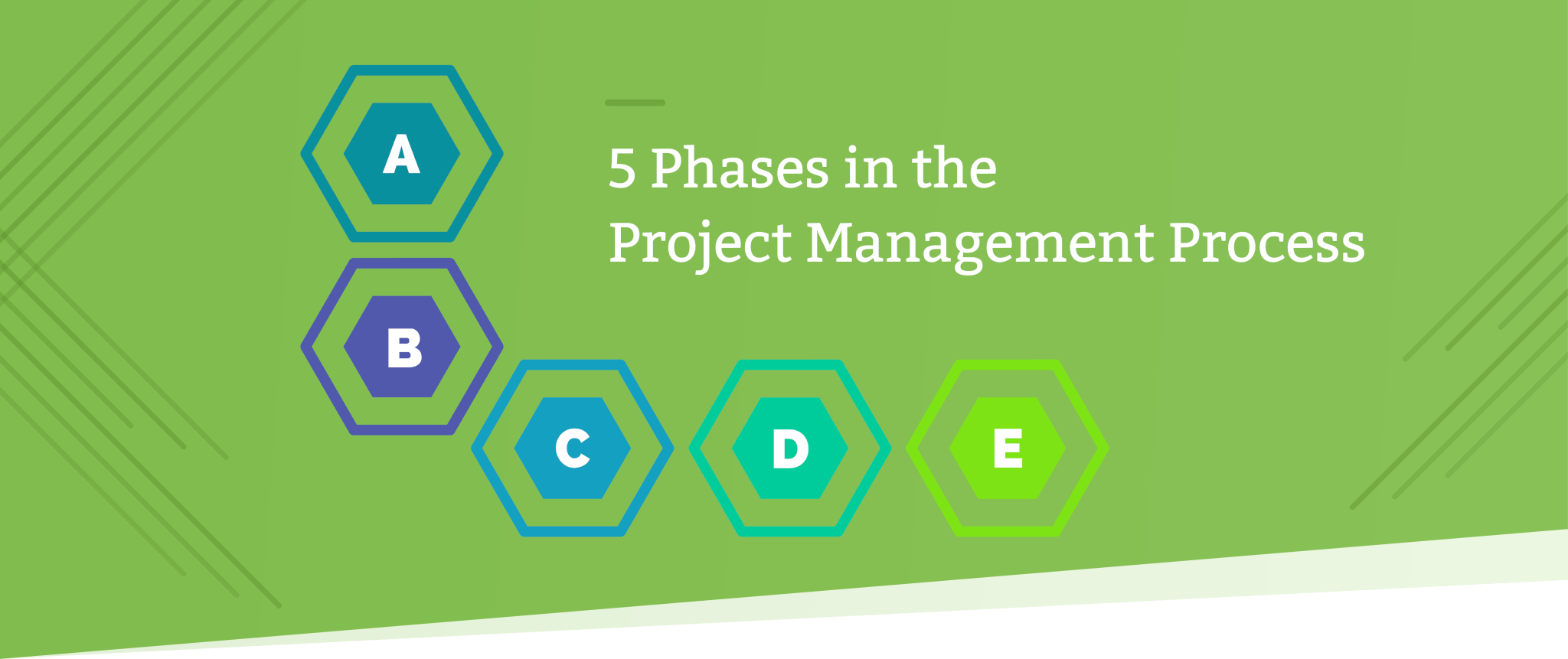
Project Management can be a complex field, but the project management process itself consists of a relatively straightforward series of steps. When you’re thinking of getting to work on a project, your goals may seem difficult to reach. However, breaking the task into these bite-sized chunks will help you to get things done.
You’ll have the security of knowing you’re following a tried and tested path towards success. Why reinvent the wheel when those who have gone before you have already outlined a roadmap to help you? Let’s take a look at the project management process from the simplest perspective of all!
The Project Management Process or Life Cycle
The project management process follows a series of five phases that begin with the decision to embark on a project and end with its completion. The phases are as follows.
- Project Initiation: During this phase, you will explore the project idea and decide whether or not you’ll proceed with it. You can research and prepare a business case document that examines the need for the project and its expected benefits. You also conduct a feasibility study that looks at what the project needs and what resources are available.
- Project Planning: You’ve decided that the project has benefits worth pursuing and have determined that you can complete it with the resources at your disposal. Now it’s time to plan. Do you need financing, and where will it come from? Where and when will you purchase the materials you need? What risks do you face, and how can you mitigate them? When and how will you keep stakeholders informed? You’ll also define the scope of the project, calculate its costs, and set timelines.
- Project Execution: Now, it’s time to get things done! As a manager, you will coordinate activities and resources towards meeting the project’s requirements.
- Project Monitoring and Control: While the project is being executed, you and your teams need to remain coordinated. You may have to adjust your plans a little or intervene when things aren’t going as well as you’d initially believed they would.
- Project Closure: During this phase of the project management process, you hand over completed work to the client (internal or external). You also evaluate the overall project with an eye to continuous improvement. Is there anything you can learn from the experience and apply to other projects? Could you do even better next time?
A Simple Framework for Getting Big Things Done
The project management process gives us a simple framework for achieving results. However, it’s worth noting that this is a very basic overview. Even relatively simple projects require coordination and a systematic approach to each of the steps we just discussed.
This type of approach allows you to overall do better as a business, as you’ll be able to improve the efficiency of the whole process.
To help you with this, you can try using workflow management software such as Tallyfy. The tool allows you to create a digital process for the project. Then, you can use it to monitor key metrics, track employee tasks, and spot bottlenecks before they become a hassle.

